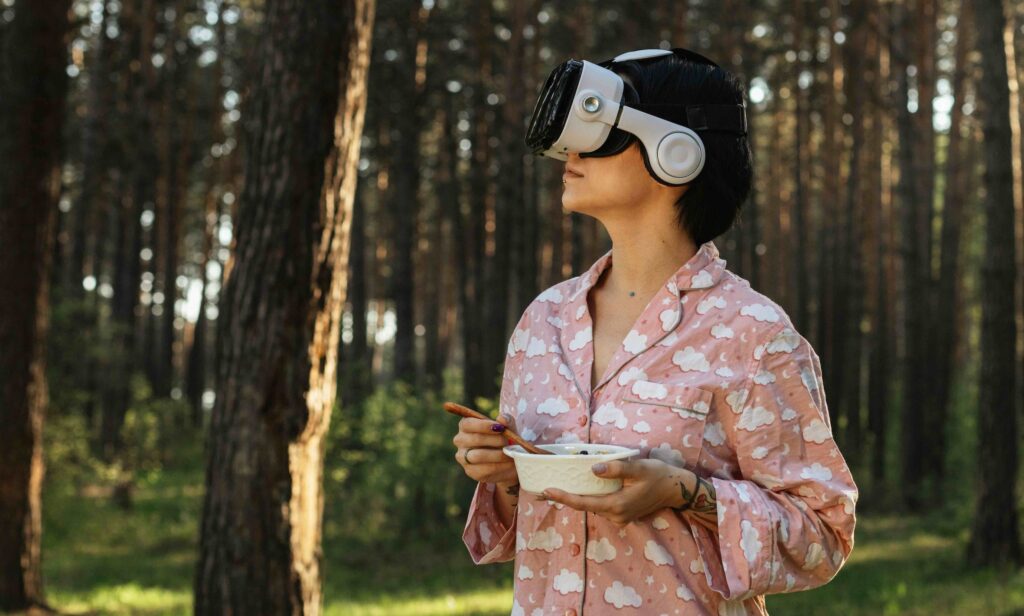Climate Fiction that explores food futures can be categorized in a number of ways. One useful way of approaching these texts is to consider the type of future food that they imagine people will consume in futures transformed by socio-ecological breakdown (climate change). Using categories that are already important to (future) food science allows for more straightforward communication between food science and the project. This blog post discusses one such type of categorization.
In the article “Incorporation of novel foods in European diets can reduce global warming potential, water use and land use by over 80%”, published in Nature Food in 2022, Rachel Mazak et al. divide future sustainable diets into three distinct categories. One is the optimized omnivore (OMN) diet where people eat essentially the same types of food as they do today, but the amount of meat and dairy consumed has been drastically reduced: This is essentially the diet proposed by the EAT Lancet commission. The second type of diet considered by Mazak et al. is vegan. Vegan food is inherently plant-based and thus already sustainable. People eating accordingly would not have to transition to other ways of eating. Finally, the article also explores what is referred to as Novel and Future Foods (NFF), These types of food include cultured meat, eggs, and dairy produced not through traditional agriculture but via new cell-culturing technologies. Novel and Future foods also include algae, bacteria and fungi harnessed to produce new types of food, as well as insects of various types.
Climate Fiction explores all these discrete food futures. In fact, to the extent that climate fiction imagines a new way of eating, it can be categorized in relation to which of these diets it suggests will dominate in the future. Of these three types of food, climate fiction is arguably primarily interested in Novel and Future Foods. Climate fiction that combines ecological concerns with more traditional and optimistic (even utopian) science fiction is especially prone to imagine futures where meat is cultured and where insects are an important part of people’s diets. That said, NFFs are also referenced in darkly dystopian texts such as Margaret Atwoods’s Oryx and Crake, William Gibson’s Neuromancer (to be turned into a streaming show by Apple TV+), or Blade Runner 2049. In such texts, NNFs are often imagined as the capitalist world/food-system’s attempt to commodify food scarcity. Privileged people still eat “real food” as in actual grass-fed cattle while the less fortunate consume various new substitutes.
Climate Fiction has been much less interested in imagining food futures where humans eat according to the EAT-Lancet Commission’s suggestions, but many texts express the same concerns as this commission. A case in point is Marian Womack’s The Swimmers where the need to turn to a mostly plant-based diet is clearly voiced. Climate fiction that showcases and promotes a vegan diet is also less common, but there is a distinct body of text, most written in what can be referred to as the Global North, that envisions vegan food futures. A case in point is Finnish author Johanna Sinisalo’s Enkelten verta/The Blood of Angels (2011/2014) where veganism is proposed as a viable alternative to the industrial meat complex (described as not only erosive but also very brutal in the text). This novel is particularly interesting in its description of eco-terrorism, and of normative food/meat attitudes that sometimes produce a violence of its own. In this way, it explains both the need to turn to other forms of eating, and the general inertia that a turn to alternative diets is likely to encounter.
From this, it is clear that when climate fiction envisions new ways of eating, it also speculates on how these new ways will be introduced, and how people in different regions and social strata will respond to their introduction. This is one of the most important reasons to turn to climate fiction; it can assist stakeholders in predicting how groups of people will respond to the introduction of new diets. Similarly, climate fiction is useful in revealing the cultures and global economic systems that promote or resist certain dietary shifts.
It must also be noted that, on top of these three categories, a substantial number of climate fictions are more interested in representing the failure and consequent collapse of the existing food system, than in imagining sustainable future diets. This type of future eating is especially prominent in the type of climate fiction that I have called the Climate Emergency Narrative. Thus, climate fiction adds a category that can be termed the Failed Future Diet (FFD) where people scavenge for food in a ruined world and/or eat other people, as in Peter Heller’s dystopian The Dog Stars.
Photo by Dmitry Ganin on Unsplash

